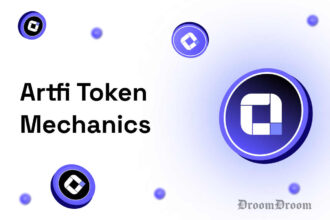The creation of the Ethereum blockchain and smart contracts came with a whirlwind of opportunities and innovation, one of which is the introduction of flash loans.
- Understanding More About Flash Loan
- Characteristics And Components of a Flash Loan
- How Does Flash Loan Works
- Use Cases For Flash Loans
- Arbitrage Opportunities
- Protect High-Risk Trader
- For Self-Liquidation to Avoid Penalties
- Collateral Swap
- Debt Refinancing
- Currency Swap for Debt Refinancing
- Disadvantages of Flash Loans
- Conclusion
- Frequently Asked Questions
- How Do Lenders Benefit From Offering Flash Loans?
- How Do Flash Loans Improve Capital Efficiency in DeFi?
- How Can Users Safeguard Themselves When Using Flash Loans?
- Are Flash Loans Only for Experienced Users?
- How Are Flash Loan Interest Rates Determined?
- Can Flash Loans Be Exploited for Malicious Purposes?
Flash loans are uncollateralized loans offered to borrowers by lenders that must be repaid within the same transaction. This type of loan is offered by a handful of decentralized finance (DeFi) platforms. This type of loan has caught the attention of many onlookers and sparked debate among the crypto community. One reason is that, unlike other decentralized finance innovations, flash loans aren’t a decentralized spinoff of existing traditional models. It’s a unique concept.
Understanding More About Flash Loan
Lending isn’t new to the DeFi ecosystem; the most common approach is the issuance of overcollateralized loans to borrowers. This means borrowers deposit a cryptocurrency into a liquidity pool to secure a loan — the deposited cryptocurrency is much more valuable than the borrowed amount, leading to a typically high loan-to-value ratio.
Flash loans are completely different; here, borrowers take a loan from lenders without putting forward any collateral. The caveat here is that the loan must be paid back before the transaction block is completed; that is, within the same blockchain block. If it isn’t returned, the entire loan reverses, and the transaction will never happen, making it secure.
These types of loans are specifically very fast paced, meaning taking out the loan and using it for whatever purpsose — in most cases, seeking arbitrage opportunities — within seconds. Repayment of the loans is also followed with an interest. While this provides numerous opportunities for different situations, the overall impact is in how it improves capital efficiency across the DeFi ecosystem while giving people more profound utility.
To learn all there is to know about block confirmation, read this comprehensive guide by DroomDroom.
At the onset, flash loans were created and specifically tailored to developers rather than end users. Meaning, unlike what is now present, flash loans didn’t have any interactive interface for users to execute such fast paced action. Developers leveraged this in making profit. The process usually involves them creating dedicated smart contracts with certain rules to be able to use the flash loan.
Let’s go a bit further in defining the several characteristics that make up the entirety of this type of loan then a walkthrough of its history.
Characteristics And Components of a Flash Loan
There are several characteristics that make up this type of loan.
Programmable and Smart Contract Based
he loan process relies on a smart contract to execute the transaction. Smart contracts establish rules for executing actions and eliminate the need for centralized intermediaries. If the rules of the smart contract are not adhered to, the flash loan will not be executed.
No Collateral Needed
The absence of a collateral requirement has allowed flash loans to gain significant traction. Borrowers don’t need to provide any form of collateral, which is a requirement in both crypto lending protocols and traditional financial institutions. On the other hand, lenders aren’t faced with the risk of borrower default, as the entire process is reversed as if the loan wasn’t initiated.
Instant Execution
Every successful flash loan transaction occurs very swiftly; the entire process of borrowing, utilizing, and repaying the loan takes place within a single blockchain transaction. If the borrower fails to repay the loan within the same transaction, the entire transaction is automatically reversed, and the funds are returned to the lending pool.
Access to Large Capital
Flash loans provide access to large uncollateralized loans, which depends on the size of the lending pool. This caters to those looking for small loans as well as those needing access to larger amounts of capital.
How Does Flash Loan Works
The process for this type loan transaction is straightforward, and while it might be technical, with the right system in place, it’s smooth.
Initiate Transaction
Step one is to initiate a loan transaction. This requires the borrower to write a smart contract that contains the terms for the flash loan to be executed. Terms of the contract include the amount of the loan requested, the actions to be taken with the borrowed funds, and the repayment plan. Following this, the smart contract will call the lending platform offering the flash loan. Some of these platforms include Aave and dYdX.
Issuing of Loan
In the second step, the lending protocol examines the borrower’s smart contract to see if the requested amount is available and if the terms of the borrower’s smart contract ensure that the repayment of the loan can be concluded in one block. Once verified and all factors are in place, the requested amount of the crypto asset is transferred to the borrower’s smart contract.
Utilization of Loan
As the name suggests, in this step, the borrower’s smart contract deploys the loan as stated in the terms of the code. These loans are mostly used for arbitrage, collateral swaps, or liquidations. More on this will be covered under the uses of flash loans below.
Loan Repayment
Once the loan has been used by the borrower’s smart contract to successfully interact with other protocols, repayment is initiated. The loan is then returned with a fee or interest as determined by the lending platform. It’s important to note that this entire process involves the payment of a gas fee. For blockchains like Ethereum, known for their infamous fees, it’s crucial to ensure your overall transaction is profitable.
Finalizing the Transaction
If all the rules are followed and the transaction is successfully completed, the borrowed funds are returned to the lending pool. If, otherwise, the borrower fails to meet the conditions of the loan within the transaction block, the loan is automatically reversed.
This tweet provides a practical example of how flash loans work:
Use Cases For Flash Loans
There are several use cases for flash loans that make them ideal for different types of users. Overall, flash loans contribute to efficient capital distribution across the DeFi ecosystem, which contributes to the system’s growth.
Arbitrage Opportunities
Flash loans allow users to take advantage of price discrepancies of an asset between two decentralized platforms. With flash loans, these users can buy low and sell high. So far, this has been a major use case many have found for flash loans.
Protect High-Risk Trader
With flash loans, traders can reduce their debt position by paying off part of the debt instantly to achieve a safer total collateralization ratio.
For Self-Liquidation to Avoid Penalties
In lending protocols, defaulting on a loan typically costs more. Some platforms charge between 3 to 15%, which is quite high. In situations where there’s a risk of defaulting on repayment, a user can leverage a flash loan to pay off their loan and protect their deposit. Users only need to pay as little as 0.09% in interest on the flash loan taken, a significant savings compared to the default penalties.
Collateral Swap
This feature allows users to make instant collateral swaps between trading positions. In scenarios where the asset a user has invested in is in a bullish trend, while another asset is outperforming, a flash loan can facilitate an easy swap to take advantage of the upward movement, potentially increasing profits.
Debt Refinancing
This is also referred to as an ‘Interest Rate Swap.’ This is used when a trader has an open position or has borrowed a crypto asset on one lending protocol but finds another protocol offering a lower interest rate. Using a flash loan, the borrower can repay the loan on the first platform and then open a new position with a lower interest rate on another lending platform.
Currency Swap for Debt Refinancing
Here, a user takes advantage of a flash loan to swap the crypto asset against which their loan is secured for another crypto asset that offers a better interest rate.
Disadvantages of Flash Loans
Smart Contract Vulnerability
Flash loans have been exploited by hackers who take advantage of vulnerabilities in smart contract code. This issue is faced by the broader crypto market as well.
Market Volatility
The fluctuating nature of the market can result in losses for traders engaging in arbitrage if the trades are not timed correctly. If the market turns volatile, the entire transaction could be reversed.
High Gas Fees
The fees involved in executing these transactions can be prohibitive for users who have not done proper calculations. Gas fees, particularly on blockchains like Ethereum, can be exorbitantly high.
Timing and Precision
The limited time available within a single block can make it difficult to complete certain transactions within the required time frame.
Conclusion
Flash loans are innovative tools disrupting the DeFi space by effectively distributing capital, adding more composability, and introducing new approaches beyond the scope of traditional financial systems.
Although they may seem complicated to non-technical users due to the intricate details and coding required, the development of more user-friendly decentralized applications is expected to make interaction more straightforward and convenient over time.
While these loans may not directly bring the next billion users to the blockchain, their influence on the DeFi industry is significant.
Frequently Asked Questions
How Do Lenders Benefit From Offering Flash Loans?
Lenders stand to gain rewards from the extra few or interest paid by the borrower who executed the flash loan. However, flash loans offer a low APY or APR on every successfully executed trade.
How Do Flash Loans Improve Capital Efficiency in DeFi?
The mechanism behind flash loans allows them to easily inject capital into the DeFi ecosystem. This Liquidity can aid different onchain activities that can improve overall activeness and, more importantly, add composability to the DeFi ecosystem.
How Can Users Safeguard Themselves When Using Flash Loans?
The risks of using these loans are very limited, this is because once the conditions for a flash loan transaction aren’t met, it’s automatically reversed as it never happened. However, you’re likely to face the issue of smart contract vulnerability which can lead to a loss if I deposit funds for lenders. Borrowers have nothing to risk since there is no deposited collateral.
Are Flash Loans Only for Experienced Users?
They’re relatively difficult types of cryptocurrency loans to execute because of the advanced level of coding the smart contract that executes the rules, leaving room for mainly experienced developers. Although some platforms provide these types of loans directly to users they are uncommon.
How Are Flash Loan Interest Rates Determined?
This is determined by the crypto lending platform. Usually, the fee and interest paid on flash loans are very small compared to other types of crypto loans.
Can Flash Loans Be Exploited for Malicious Purposes?
There have been instances when flash loans have been exploited by malicious actors by taking advantage of the vulnerability of the smart contract. The Euler Finance protocol hack where $197 million was stolen is an example.



















